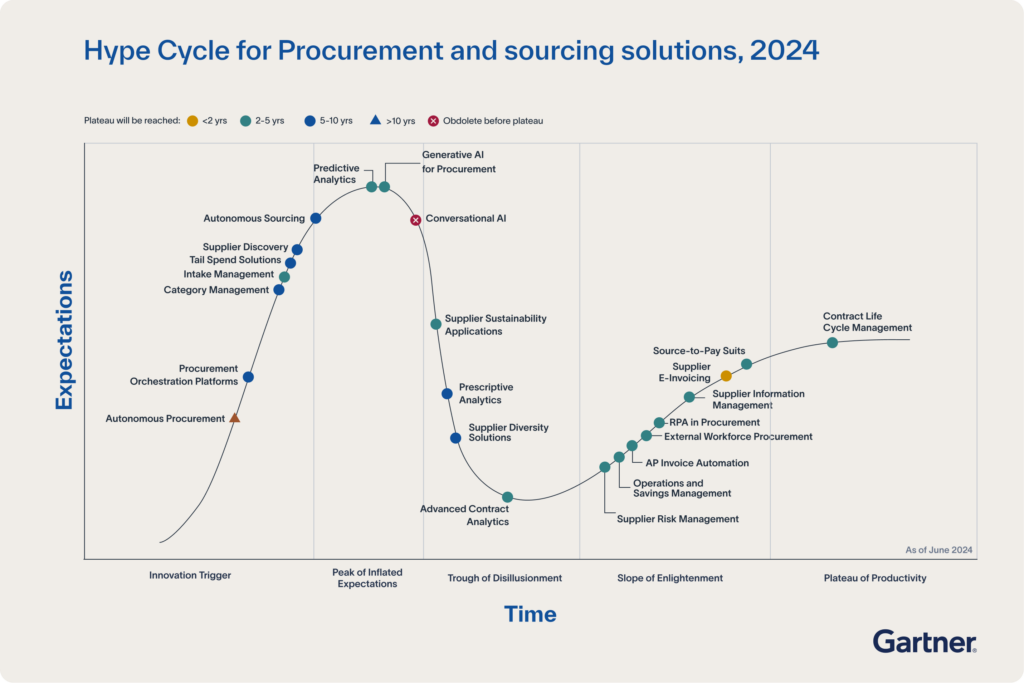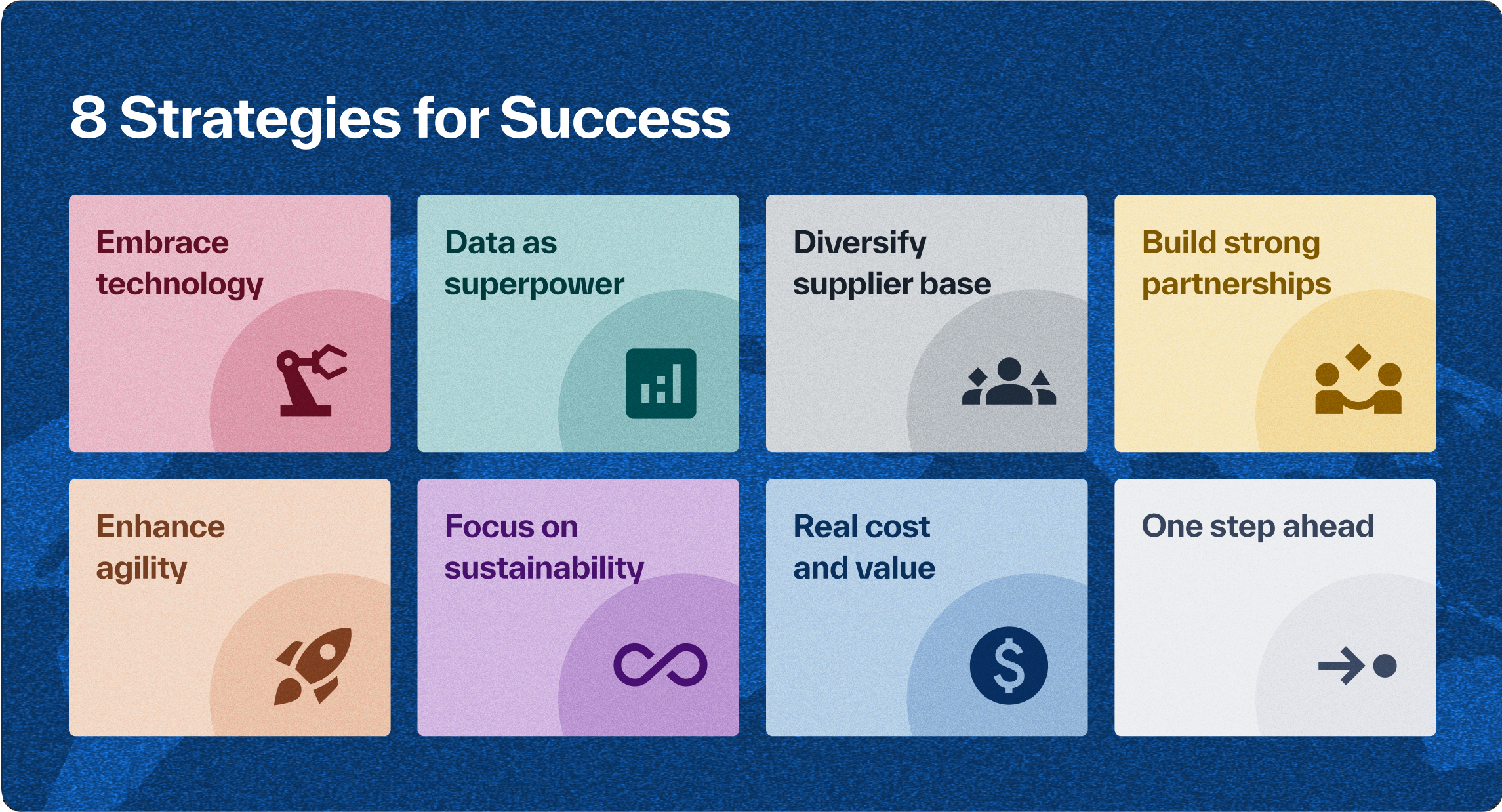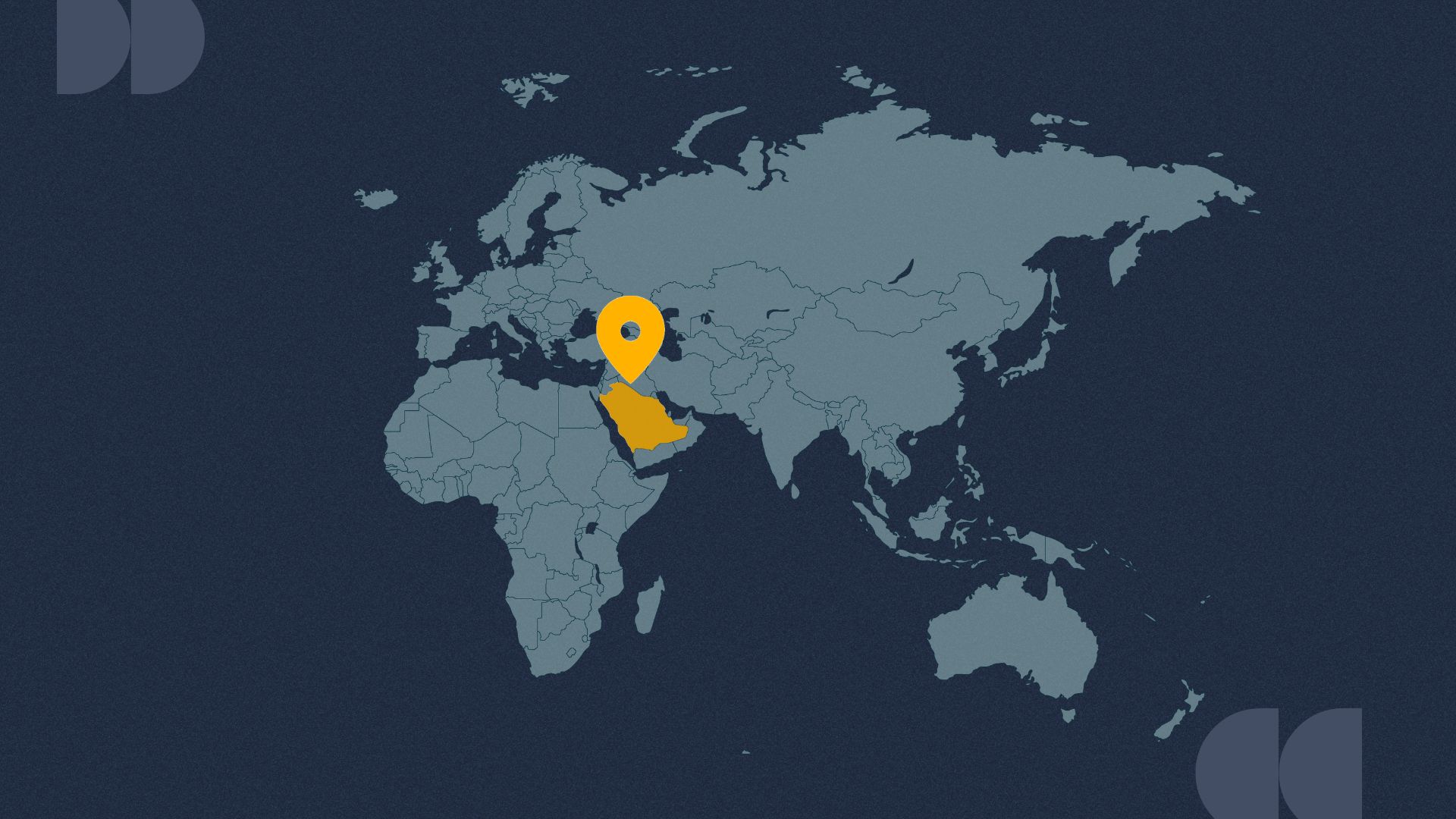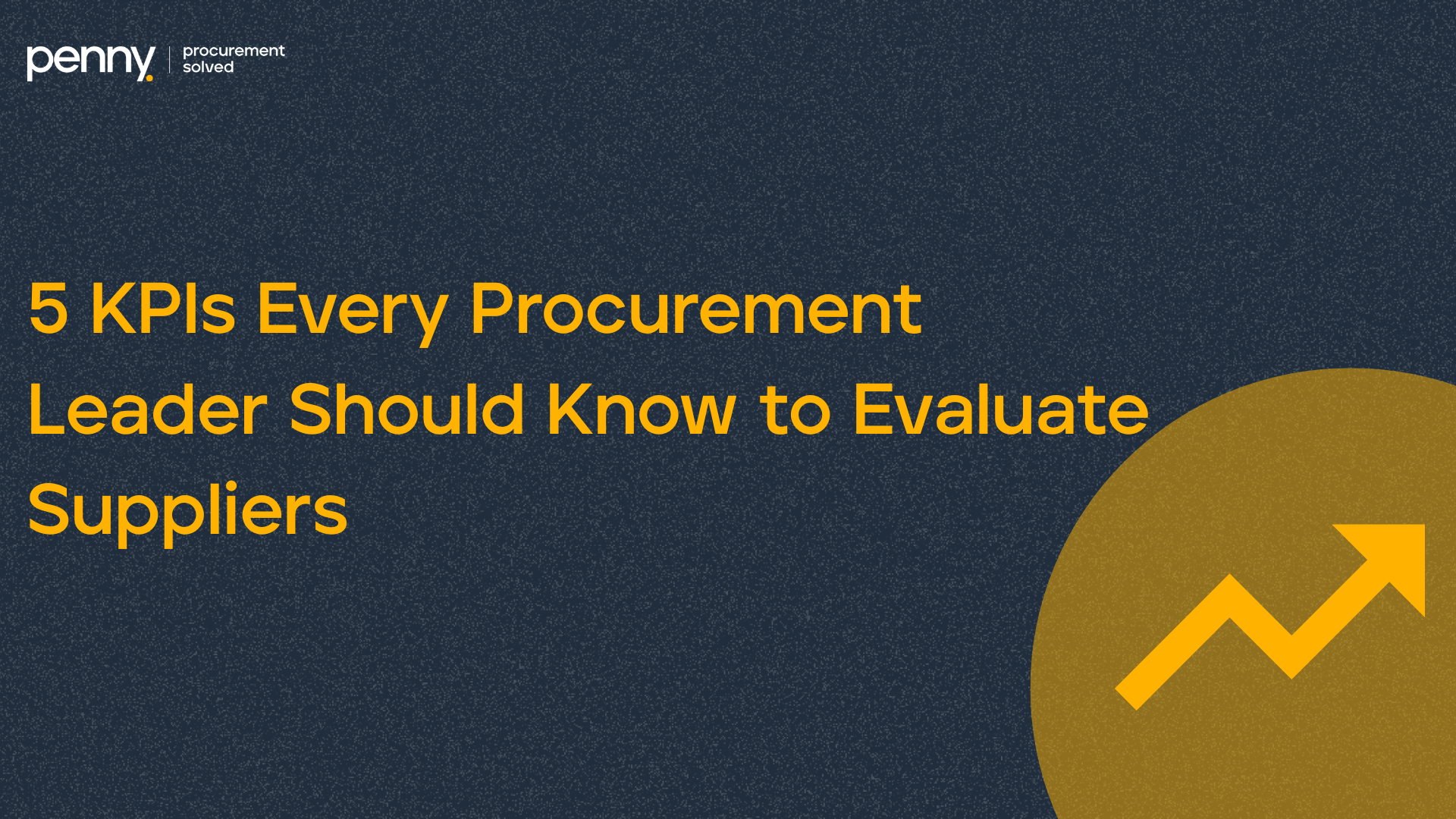Procurement leaders today face an array of unprecedented challenges. Economic volatility, supply chain disruptions, and geopolitical tensions are reshaping the procurement landscape, demanding more than just survival tactics. To thrive amidst these complexities, chief procurement officers and procurement leaders must adopt agile, resilient strategies. Here’s how to navigate this challenging environment and turn market volatility into a strategic advantage.
The new volatility challenge: Beyond price fluctuations
Market volatility isn’t just about fluctuations in prices. Surprise shortages, sudden demand spikes, and evolving regulations can disrupt your supply chain. Traditional methods are no longer sufficient. To turn volatility into an advantage, procurement leaders must embrace innovative strategies and advanced tools.

In a volatile market, having visibility and control over your supply chain is crucial. Technology provides the clarity needed to navigate complexity. Real-time analytics and data-driven insights enable procurement leaders to make swift, informed decisions. Platforms like Penny Software offer comprehensive solutions that integrate all aspects of procurement into a unified system. This integration ensures that procurement professionals can anticipate disruptions, evaluate supplier performance, and optimize procurement cycles, leading to increased efficiency and reduced risks.
Utilizing advanced technologies, such as AI-driven tools and predictive analytics, is becoming essential. For example, generative AI can help manage hedge programs and facilitate material substitutions, providing critical insights and streamlining procurement processes.
Key Actions:
- Implement Advanced Analytics: Use AI-driven analytics to predict potential disruptions and identify alternative suppliers before crises hit. These tools can analyze vast amounts of data quickly, providing actionable insights.
- Automate Procurement Processes: Reduce manual errors and speed up procurement cycles through automation. Automated processes ensure consistency, compliance, and efficiency, enabling procurement teams to focus on strategic initiatives.
- Adopt Autonomous Sourcing: Utilize autonomous sourcing technologies to automate and optimize the sourcing process. Autonomous sourcing leverages machine learning algorithms to evaluate suppliers, negotiate contracts, and manage procurement tasks with minimal human intervention.

In today’s fast-paced market, real-time insights are essential for making informed decisions. Data has become the new currency in procurement, providing a strategic advantage. Modern procurement software acts as a crystal ball, offering up-to-the-minute market information, predicting potential issues, and identifying opportunities that might otherwise be missed. By leveraging data, procurement leaders can move away from reactive strategies and towards proactive, predictive approaches.
Strategic use of advanced analytics enables better decision-making in areas such as commodity forecasting, risk assessment, performance optimization, and supplier negotiations. For instance, AI can help procurement teams develop strategic decisions based on available data, significantly improving efficiency and accuracy.
Key Actions:
- Work Smarter, Not Harder: Automate repetitive tasks, freeing your team to focus on high-value strategic activities. Automation tools can handle routine procurement tasks, ensuring accuracy and efficiency.
- Leave Spreadsheets Behind: Transition to dynamic, real-time data solutions. Spreadsheets are static and prone to errors, whereas real-time data platforms provide current, accurate information, enabling faster, more informed decisions.

Relying on a limited number of suppliers can be risky. Diversifying your supplier base helps mitigate these risks, enhances negotiation power, and maintains flexibility. By working with a broader range of suppliers, procurement leaders can ensure continuity, leverage competitive pricing, and foster innovation. Diversification also helps in managing geopolitical risks, as it spreads the risk across multiple regions.
Reassessing globalized sourcing strategies and developing an RFP engine to prioritize categories and suppliers based on market development and spend analysis ensures procurement efforts focus on high-value areas.
Key Actions:
- Identify New Suppliers: Continuously scout for new suppliers across different regions to avoid dependency on any single source. Supplier diversity can bring in new ideas, technologies, and solutions.
- Develop Strategic Partnerships: Establish long-term relationships with multiple suppliers to ensure continuity and reliability. Strategic partnerships can lead to better collaboration, innovation, and mutual growth.
- Evaluate Supplier Resilience: Regularly assess suppliers’ financial health and operational capabilities to anticipate and manage risks effectively. Resilient suppliers can better withstand market disruptions, ensuring a stable supply chain.

Strong relationships with suppliers are crucial in times of crisis. Building these relationships fosters collaboration, innovation, and mutual support. By treating suppliers as partners rather than vendors, procurement leaders can create a more resilient and responsive supply chain. Collaborative partnerships lead to better communication, problem-solving, and joint innovation efforts.
Intensifying design-to-cost collaborations with key suppliers and investing directly in critical supply chains can drive significant value. This approach enhances innovation and resilience by leveraging suppliers’ expertise and resources.
Key Actions:
- Regular Communication: Maintain open and regular communication with suppliers to keep everyone informed about challenges and capabilities. Regular updates help in managing expectations and resolving issues proactively.
- Collaborative Problem-Solving: Work together with suppliers to develop solutions for common challenges, such as supply disruptions or cost increases. Joint efforts can lead to innovative solutions that benefit both parties.
- Supplier Development Programs: Implement programs to help suppliers improve their processes, quality, and sustainability practices. Investing in supplier development can lead to better performance, reduced risks, and enhanced supply chain resilience.

Traditional long-term contracts often lack the flexibility needed in volatile markets. Adopting more adaptable contracting strategies allows for swift responses to rapid changes. Flexible contracts can accommodate fluctuations in demand, pricing, and supply conditions, providing procurement leaders with the agility to navigate uncertainties effectively.
Managing volatility requires an updated playbook that includes scenario planning and end-to-end risk management. This proactive approach helps control costs and maintain supply chain stability amid inflationary pressures and other market shifts.
Key Actions:
- Opt for Shorter Contract Terms: Short-term contracts allow for regular reassessment and adjustments based on market conditions. These contracts provide the flexibility to renegotiate terms as the market evolves.
- Incorporate Flexibility Clauses: Include clauses that permit volume adjustments, price reviews, and alternative sourcing options. Flexibility clauses ensure that contracts can adapt to changing circumstances without renegotiation.
- Use Performance-Based Contracts: Tie payments and renewals to supplier performance metrics to ensure accountability and continuous improvement. Performance-based contracts incentivize suppliers to meet or exceed expectations, leading to better outcomes.

Sustainability and ethical sourcing are no longer optional; they are essential components of a resilient and responsible supply chain. Integrating these considerations into procurement strategies not only meets regulatory requirements but also aligns with corporate social responsibility goals. Sustainable and ethical practices can lead to long-term cost savings, enhanced brand reputation, and a more stable supply chain.
Incorporating ESG factors into procurement decisions helps reduce Scope 3 emissions and promotes socially responsible supply chains. Partnering with suppliers to establish clear guidelines and support sustainable sourcing practices is crucial for long-term success.
Key Actions:
- Set Clear Sustainability Goals: Define and communicate clear sustainability objectives for all procurement activities. Clear goals guide decision-making and ensure alignment with broader corporate sustainability initiatives.
- Evaluate Supplier Practices: Assess suppliers’ environmental and social practices to ensure alignment with sustainability goals. Regular evaluations help in identifying and mitigating risks associated with unsustainable practices.
- Promote Circular Economy Practices: Encourage suppliers to adopt circular economy practices, such as recycling and waste reduction, to minimize environmental impact. Circular economy practices can lead to cost savings, resource efficiency, and a reduced environmental footprint

Understanding the total cost and value of ownership is crucial. This involves considering factors beyond the initial price, such as supplier reliability, potential risks, and additional benefits. A comprehensive cost analysis helps in making informed decisions that balance cost, quality, and value.
Optimizing operations from end to end by establishing cross-functional nerve centers creates transparency and monitors markets effectively. This broader approach emphasizes value creation, resilience, and sustainability, moving beyond traditional cost savings.
Key Actions:
- Total Cost of Ownership (TCO): Use TCO tools to understand the full picture, including supplier reliability and potential risks. TCO analysis considers all costs associated with a product or service over its lifecycle.
- Total Value of Ownership (TVO): Consider additional benefits like improved quality, faster delivery, and reduced risk. TVO analysis evaluates the overall value provided by a supplier, beyond just the cost.
- Integrate Cost and Value Analysis: Combine TCO and TVO analyses to make the best procurement decisions. A holistic view of cost and value ensures that procurement decisions align with strategic objectives.

Continuous learning and market monitoring are key to staying ahead of the competition. Investing in your team’s skills and keeping a close eye on market trends enable procurement leaders to anticipate changes and adapt proactively. Staying informed about industry developments, technological advancements, and market dynamics helps in making strategic decisions that drive success.
Redefining portfolio and product design to reduce dependencies on scarce materials and few suppliers is essential. By actively managing costs and risks, organizations can capture emerging opportunities and enhance resilience. Additionally, digitizing end-to-end procurement processes with modern enterprise data management systems ensures integration with the broader organization and prepares for future technological advancements.
Key Actions:
- Be a Market Watcher: Monitor market conditions and competitor actions to adapt quickly and seize new opportunities. Market intelligence provides insights into emerging trends, risks, and opportunities.
- Invest in Your Team: Ensure your team has the latest knowledge and skills through continuous learning. Training programs, workshops, and certifications keep your team updated on best practices and new technologies.
- Foster a Culture of Innovation: Encourage your team to embrace innovation and think creatively. A culture of innovation leads to continuous improvement and a competitive edge.
Leveraging the Latest Trends: Insights from the Gartner Hype Cycle for Procurement

The Gartner Hype Cycle for Procurement and Sourcing Solutions, 2024 provides valuable insights into emerging technologies that can enhance procurement strategies. Key takeaways include:
- Generative AI: Currently at the peak of its hype, generative AI is transforming procurement with applications in contracting, sourcing, and supplier management. With 73% of procurement organizations planning to implement generative AI by the end of 2024, this technology is set to reach the Plateau of Productivity within two years. Generative AI can automate complex tasks, improve decision-making, and drive innovation.
- Adoption of ESG Solutions: Organizations remain committed to environmental, social, and governance (ESG) initiatives, particularly in supplier sustainability and supplier diversity. As these solutions mature, regulatory requirements increase, and companies focus on both compliance- and non-compliance-driven goals to scale their initiatives. ESG solutions help in building a sustainable and responsible supply chain.
- Conversational AI: While once promising, conversational AI is becoming obsolete as generative AI-enabled chatbots gain adoption. These chatbots are expected to outpace traditional conversational AI solutions, rendering them obsolete before reaching mainstream maturity. Generative AI-enabled chatbots provide more advanced capabilities, enhancing user interactions and automating customer service tasks.
Conclusion
In a world of constant change, procurement is more important than ever. By adopting these strategies and leveraging emerging technologies like those highlighted in the Gartner Hype Cycle, you can build a resilient, innovative, and value-driven procurement function. With platforms like Penny Software providing the necessary tools and insights, procurement leaders can turn market volatility into a competitive advantage, ensuring long-term success and operational efficiency.


